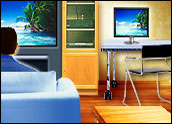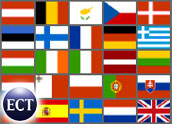
With the December announcement that NDS, a provider of technology solutions for digital pay-TV, acquired Jungo, a residential gateway software provider, we’re continuing to witness consolidation in the market to deliver complete end-to-end access and service provider solutions.
The purchase also reaffirms the key roles that home connectivity and enhanced WAN (wide area network) and LAN (local area network) management tools will play in the competition among service providers in television, broadband and communications services.
We’ve already witnessed significant acquisition and investment news from companies such as Alcatel (the Lucent merger took effect in December), Cisco Systems (purchased Arroyo, Ashley Laurent, KiSS Networked Entertainment and Scientific Atlanta, plus a significant investment in Widevine Technologies), and Motorola (which has added Broadbus, Kreatel and Netopia).
Forecasting Home Connectivity
“Digital Living Forecasts,” a recently released report from Parks Associates, details the market opportunities available to the service provider community in the provisioning of advanced home connectivity products and services.
Our research indicates strong growth at year-end 2010 for U.S. households in access-related services, including more than 80 million broadband households; 65 million bundled-services subscribers; 30 million bundled-VoIP (voice over Internet protocol) subscribers; more than 6.5 million residential telco TV subscribers; and nearly US$3 billion in cable video-on-demand revenue.
As the number of households with advanced digital services grows, we’ll see a parallel increase in the prevalence of residential customer premise equipment.
The report shows solid growth through 2010 in these specific categories:
- Nearly 20 million households will be using whole-house DVR solutions;
- Sales of networked-attached storage devices will exceed 3 million units; and
- Connected entertainment households (with multimedia and/or entertainment networked solutions) will exceed 30 million households.
Residual Products
What sort of trends will we see going forward?
While 2005 and 2006 were mainly about building end-to-end network and infrastructure solutions, in 2007 we will see residual products and services (both stand-alone and incorporated into service provider bundles) begin to leverage this infrastructure for a host of new services and product solutions.
Some key examples of these add-on solutions include sales — expected to reach revenues of $1.6 billion — of portable multimedia players, which will extend the entertainment experience to on-the-go environments.
Additionally, mobile phone revenues, which will incorporate many additional services beyond voice, will reach $181 billion; online gaming subscriptions, fees and derivative revenues will reach $4.4 billion; digital music services will exceed $3 billion in revenue; and Internet video services (subscriptions, fees and advertising) will reach more than $7 billion in revenue.
Innovation Continues
What remains exciting about the digital lifestyle space is the continuing trend toward innovation, which will not be limited to the large and highly integrated companies.
Some interesting areas of opportunity that we will be watching closely this year include the following:
- Building smarter content delivery networks that allow service and content providers to better scale their existing infrastructure to deploy an even richer user experience;
- Continued work on the WAN and LAN management. As service providers’ products and applications reach farther inside the digital home, they will need to build smarter and more dynamic management and reporting systems to help them better solve customer issues;
- More advanced customer premise equipment (including set-top boxes, residential gateways and other equipment) that help manage services and support inside the home;
- Greater storage capacity for mobile and portable platforms;
- The release of more robust home networking solutions (both wired and wireless) that enable the in-home environment to receive and distribute robust content (including HD) from the service provider;
- Trends in alternative broadband delivery networks. As ownership of the network becomes an even more critical piece in owning the customer, we will likely see alternative players invest heavily in broadband solutions beyond cable, DSL and fiber;
- Enhancements to software that improve on the user experience for creating and sharing their own content; and
- Dramatic improvements to user interfaces, both physical and graphic — service providers, end-user equipment manufacturers and other players will need to invest both time and money in developing next-generation interfaces and search technologies to help consumers better search and organize their digital content libraries.
Kurt Scherf is vice president and principal analyst for Parks Associates. E-mail Scherf at[email protected].















































Social Media
See all Social Media